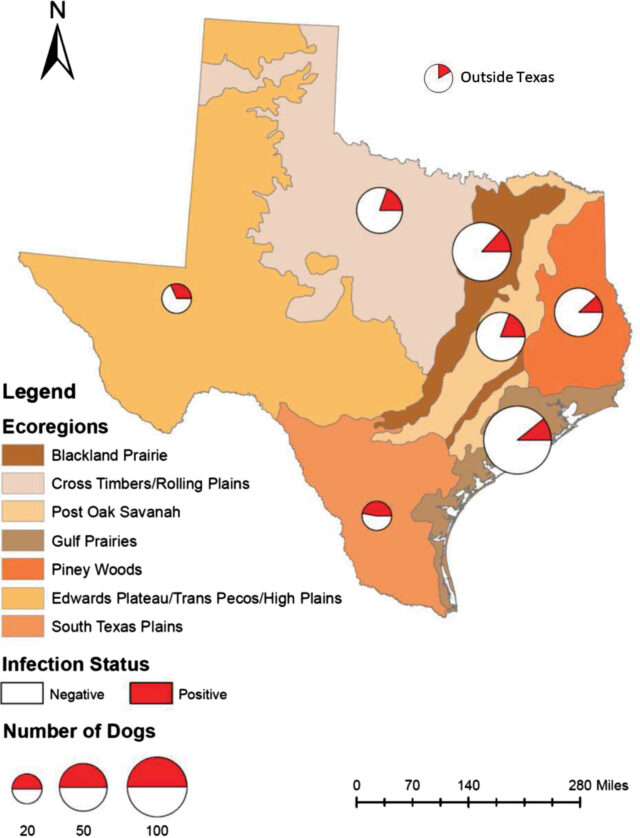Risk factors… 2019 JVIM article
Title: Risk factors and select cardiac characteristics in dogs naturally infected with Trypanosoma cruzi presenting to a teaching hospital in Texas
Authors: Alyssa C. Meyers, Sarah A. Hamer, Derek Matthews, Sonya G. Gordon, and Ashley B. Saunders
Journal/Date of Publication: Journal of Veterinary Internal Medicine, 2019
DOI: 10.1111/jvim.15516
Objective: To report epidemiologic and select cardiac characteristics associated with T. cruzi infection in dogs presenting to a teaching hospital in Texas.
Type of Study: Retrospective
Conclusions:
- Infected dogs were generally younger and more likely to have ventricular arrhythmias and ECG abnormalities.
- Dogs with infected housemates had a significantly higher risk of infection.
- Increased awareness and consideration of T. cruzi testing are needed for dogs presenting with cardiac issues in endemic areas.
Clinical Application:
- Awareness: Clinicians in endemic areas should consider Chagas disease when diagnosing cardiac conditions in dogs.
- Testing: Testing is crucial for dogs with unexplained ventricular arrhythmias or those with infected littermates.
- Risk factors: Younger dogs and those with infected housemates are at higher risk and should be tested proactively.
- Management: While treatment remains challenging, identifying Chagas disease can aid in managing cardiac symptoms and providing a prognosis.
- Further Evaluation: Dogs with multiple ECG abnormalities, particularly including ventricular arrhythmias, should be assessed for Chagas disease especially when there are other historical or clinical findings consistent with T. cruzi infection.
- Differential Diagnosis: T. cruzi infection can mimic other cardiac diseases, underscoring the need for differential diagnosis in breeds predisposed to arrhythmogenic right ventricular cardiomyopathy (example: boxers, bulldogs), dilated cardiomyopathy (example: doberman pinscher), and tricuspid valve dysplasia (example: retrievers).

